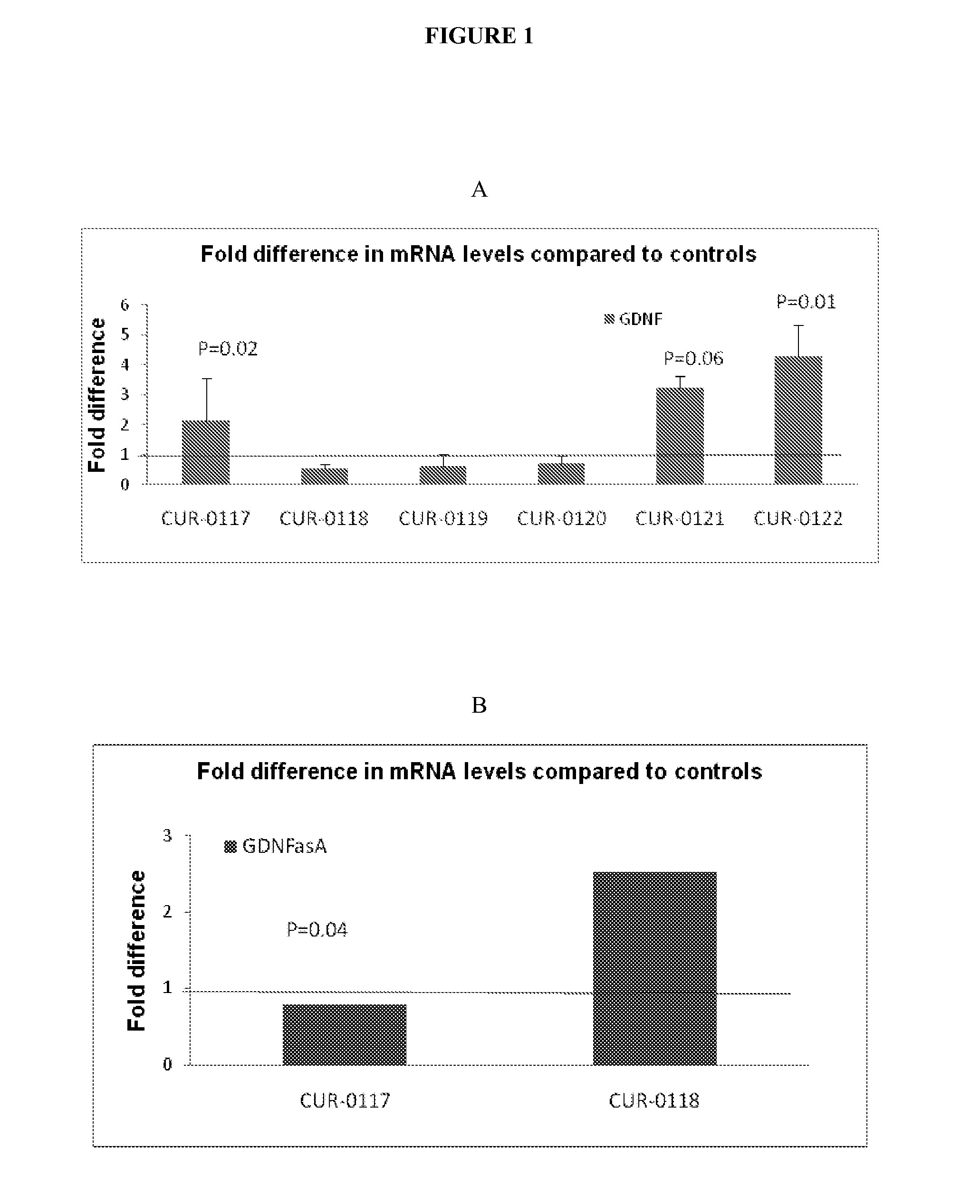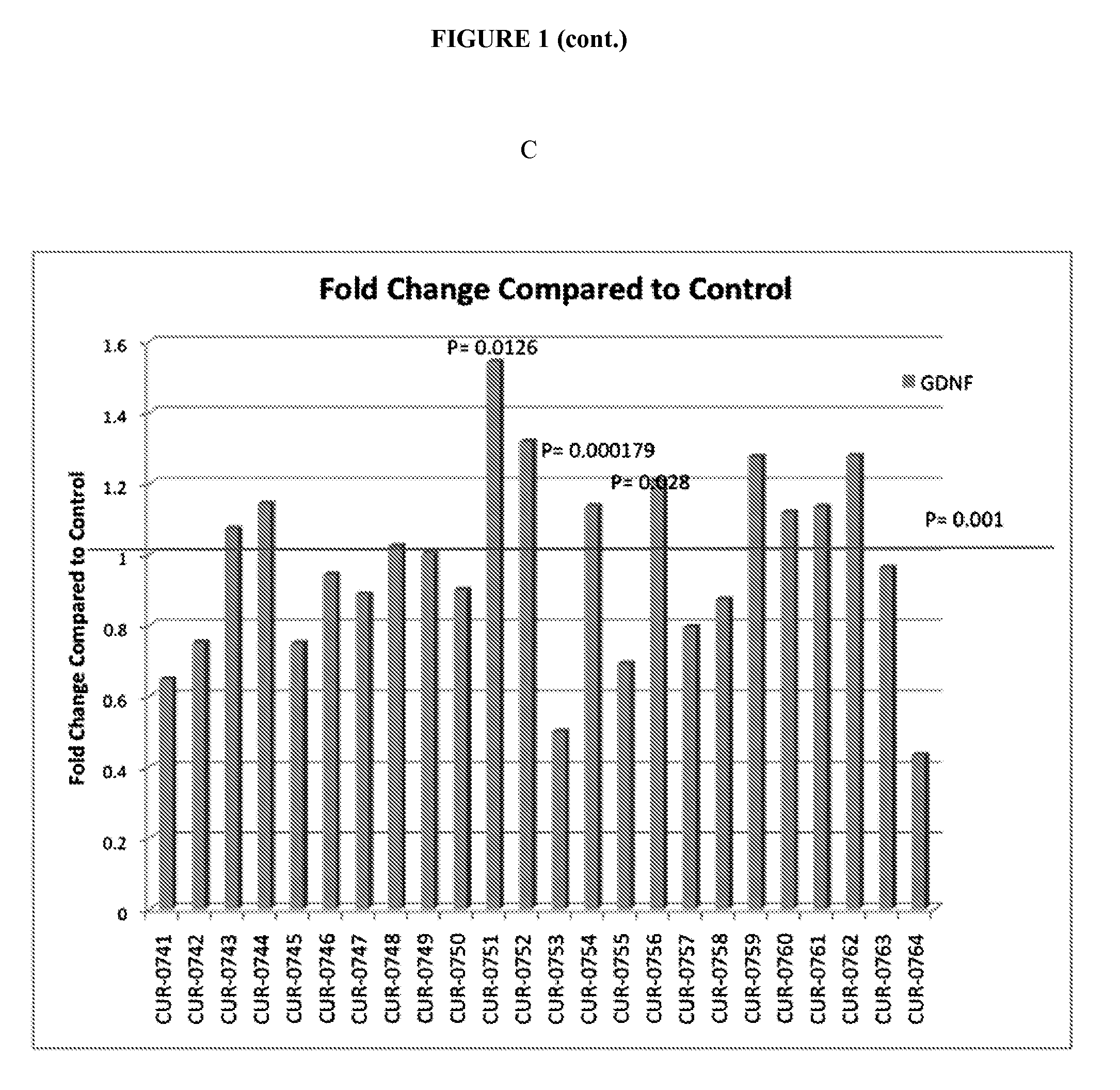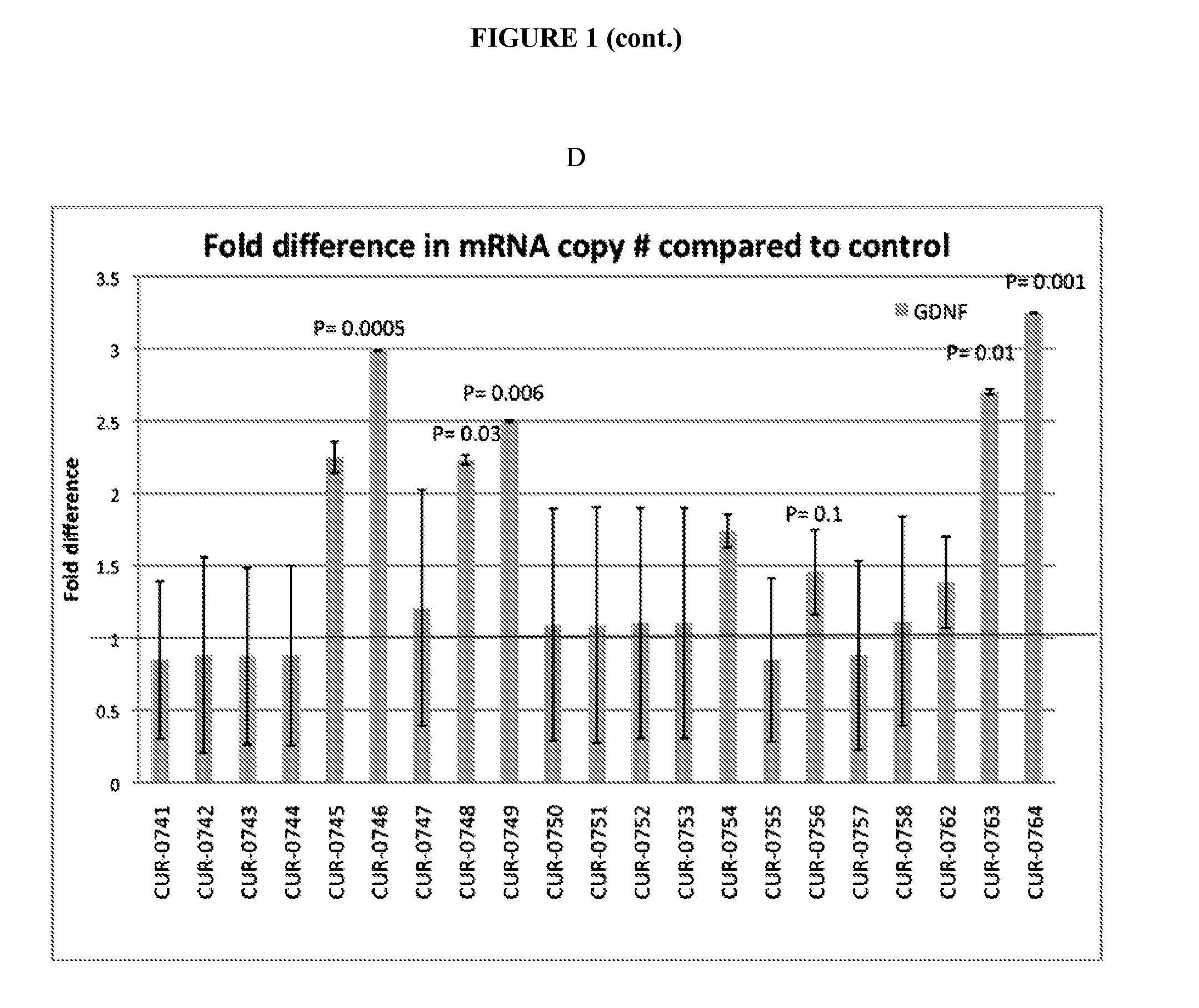Treatment of glial cell derived neurotrophic factor (GDNF) related diseases by inhibition of natural antisense transcript to gdnf
a glial cell derived neurotrophic factor and gene-derived technology, applied in the field of oligonucleotides mod, can solve the problems of interfering with rna splicing, transcription, translation, replication, etc., and achieve the effect of modulating function and/or expression
- Summary
- Abstract
- Description
- Claims
- Application Information
AI Technical Summary
Benefits of technology
Problems solved by technology
Method used
Image
Examples
example 1
Design of Antisense Oligonucleotides Specific for a Nucleic Acid Molecule Antisense to and / or Sense Strand of Glial Cell Derived Neurotrophic Factor (GDNF) Polynucleotide
[0226]As indicated above the term “oligonucleotide specific for” or “oligonucleotide targets” refers to an oligonucleotide having a sequence (i) capable of forming a stable complex with a portion of the targeted gene, or (ii) capable of forming a stable duplex with a portion of a mRNA transcript of the targeted gene.
[0227]Selection of appropriate oligonucleotides is facilitated by using computer programs that automatically align nucleic acid sequences and indicate regions of identity or homology. Such programs are used to compare nucleic acid sequences obtained, for example, by searching databases such as GenBank or by sequencing PCR products. Comparison of nucleic acid sequences from a range of species allows the selection of nucleic acid sequences that display an appropriate degree of identity between species. In ...
example 2
Modulation of GDNF Polynucleotides
[0235]Treatment of HUVEC Cells with Antisense Oligonucleotides
[0236]HUVEC cells from ATCC (Promo Cell cat# C-12253) were grown in Epithelial Growth Media (Promo Cell cat #C-22010) at 37° C. and 5% CO2. One day before the experiment the cells were replated using Promo Cell Detach Kit (cat#C-41200) at the density of 1.5×10̂5 / ml into 6 well plates and incubated at 37° C. and 5% CO2. On the day of the experiment the media in the 6 well plates was changed to fresh Epithelial Growth Media. All antisense oligonucleotides were diluted to the concentration of 20 μM. Two μl of this solution was incubated with 400 μl of Opti-MEM media (Gibco cat#31985-070) and 4 μl of Lipofectamine 2000 (Invitrogen cat# 11668019) at room temperature for 20 min and applied to each well of the 6 well plates with HUVEC cells. Similar mixture including 2 μl of water instead of the oligonucleotide solution was used for the mock-transfected controls. After 3-18 h of incubation at 37...
example 3
Delivery of Oligonucleotides Specific for GDNF Antisense Transcripts into Primates
[0251]All experimentation is performed in accordance with NIH guidelines and institutional animal care approval. Under MRI guidance, each monkey is administered six stereotaxic injections of antisense oligonucleotide compositions of the invention bilaterally into the caudate nucleus, putamen, and substantia nigra. Injections are made into the head of the caudate nucleus (10 microliters), body of the caudate nucleus (5 microliters), anterior putamen (10 microliters), commissural putamen (10 microliters), postcommissural putamen (5 microliters), and substantia nigra (5 microliters). Injections are made through a 10 microliter Hamilton syringe connected to a pump at a rate of 0.5 microliter / min. During the injection, the needle is raised 1 to 2 mm to better disperse the oligonucleotide composition through the intended target. The needle is left in place for an additional 3 min to allow the injectate to di...
PUM
| Property | Measurement | Unit |
|---|---|---|
| temperature | aaaaa | aaaaa |
| ionic strength | aaaaa | aaaaa |
| temperature | aaaaa | aaaaa |
Abstract
Description
Claims
Application Information
 Login to View More
Login to View More - R&D
- Intellectual Property
- Life Sciences
- Materials
- Tech Scout
- Unparalleled Data Quality
- Higher Quality Content
- 60% Fewer Hallucinations
Browse by: Latest US Patents, China's latest patents, Technical Efficacy Thesaurus, Application Domain, Technology Topic, Popular Technical Reports.
© 2025 PatSnap. All rights reserved.Legal|Privacy policy|Modern Slavery Act Transparency Statement|Sitemap|About US| Contact US: help@patsnap.com



